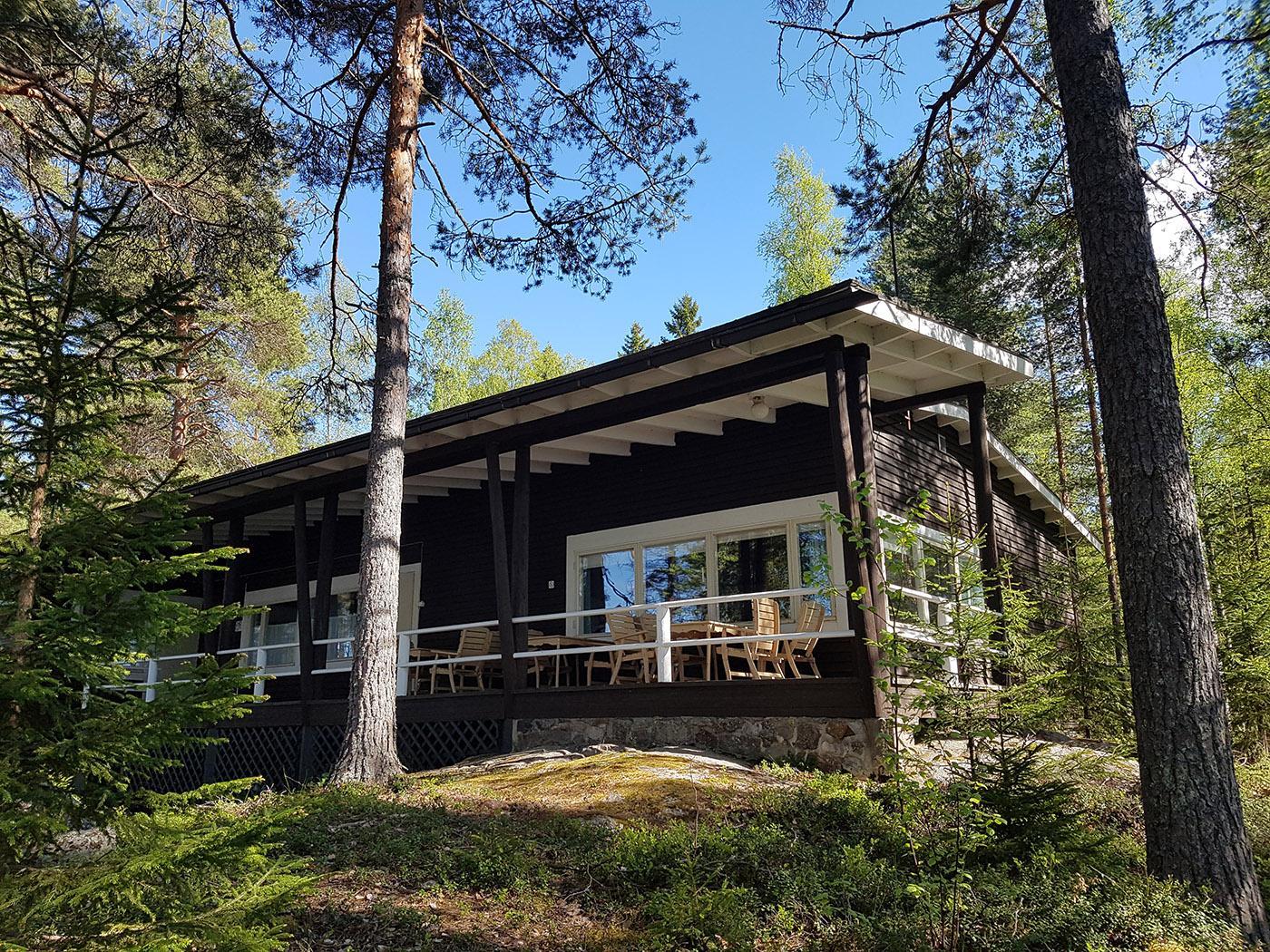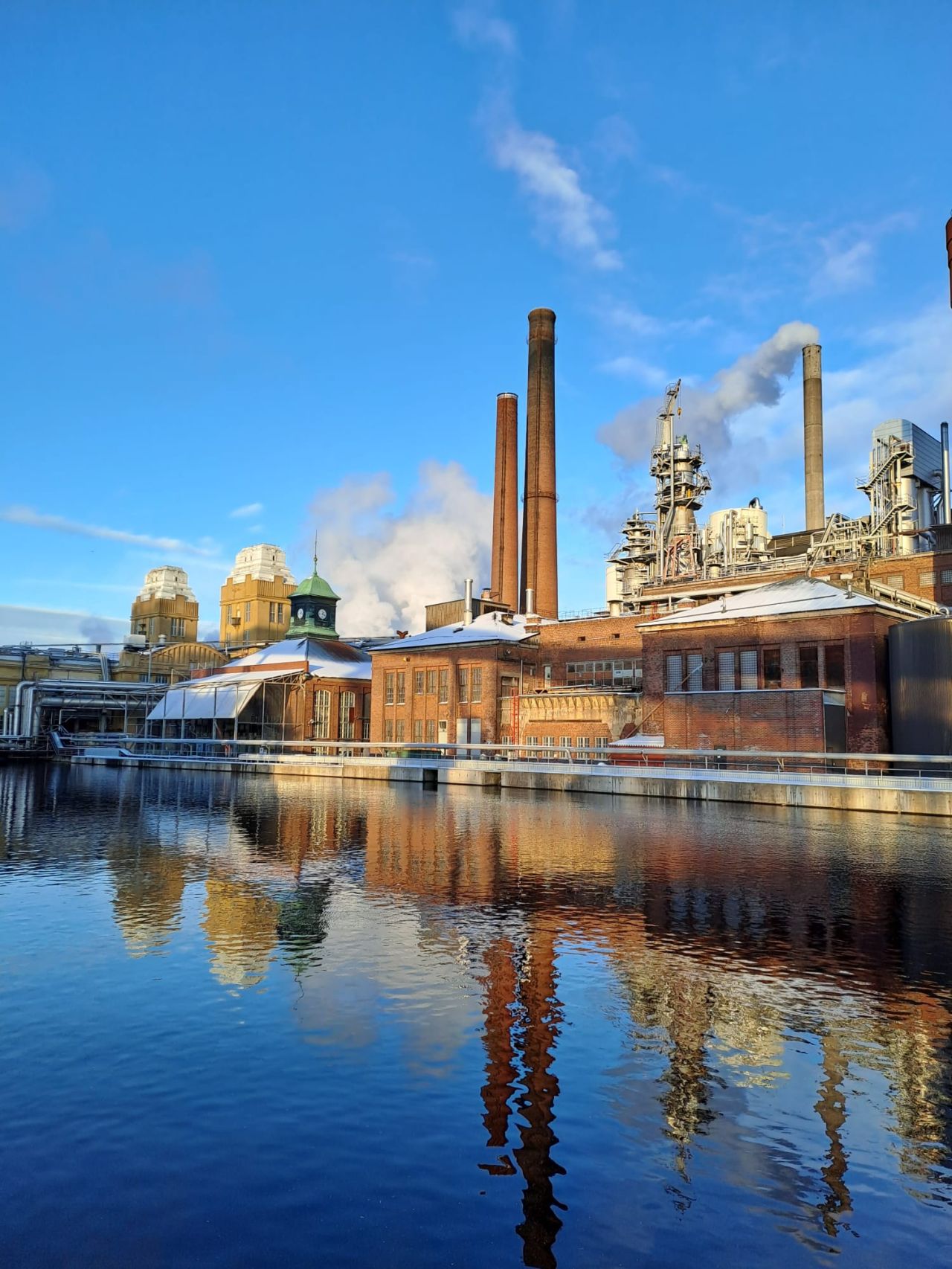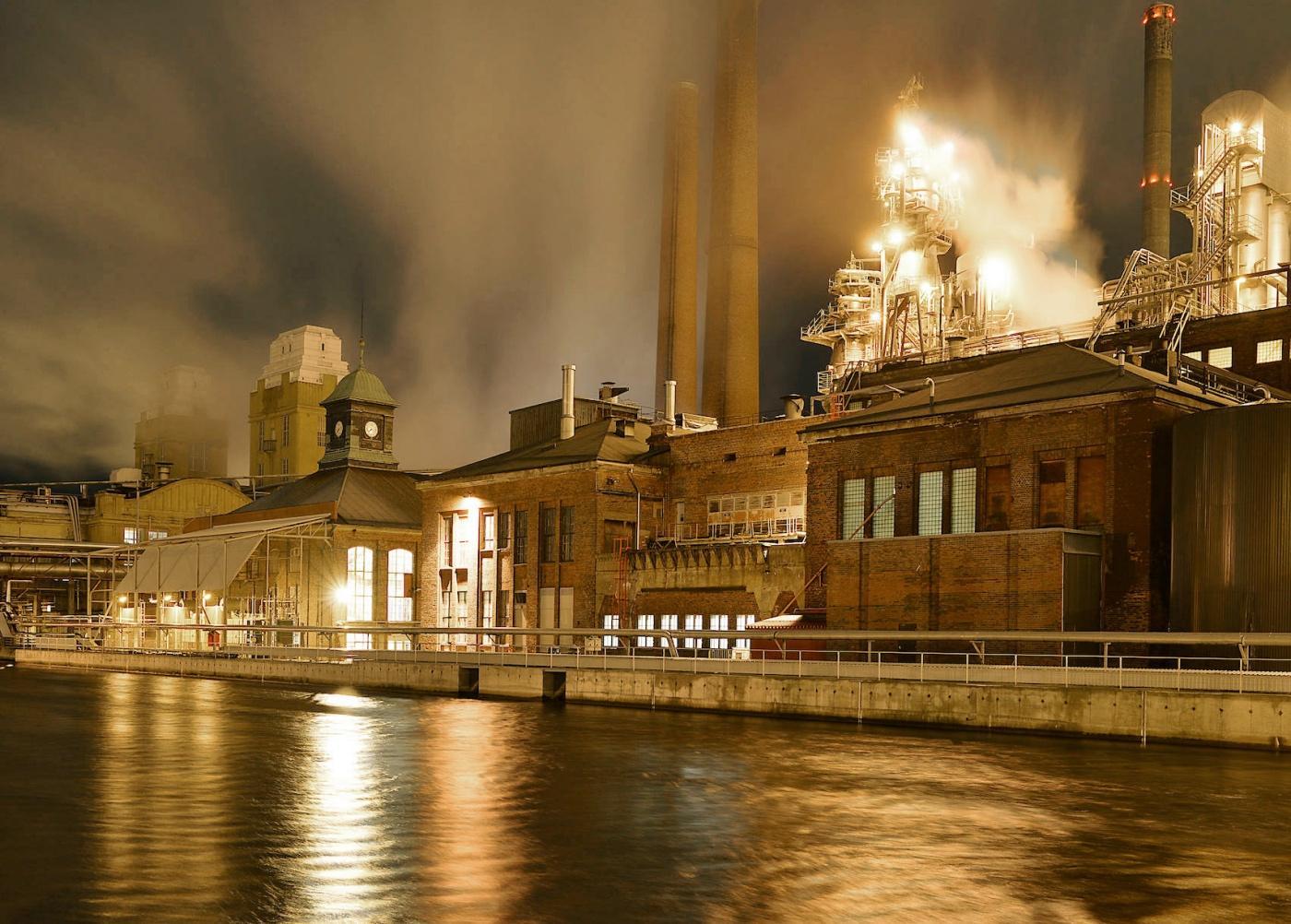Kinkamo is the first building that Alvar Aalto designed in Varkaus. Kinkamo was designed to be a weekend cabin in Kopolanniemi for the workers of the A. Ahlström factory. Kinkamo is a good example of Aalto’s efforts to adapt the building to its natural surroundings: it is located on a lake shore at the edge of the forest and it is not visible from the opposite shore, or from passing boats. The Warkaus Factory club-association approved the construction of Kinkamo during a general meeting held on May 12th, in 1937. The name Kinkamo was the result of a name competition organized in 1939.
Kinkamo is a joint project of Alvar and Aino Aalto: Alvar Aalto was commissioned a plan for the building in 1937, while the interiors were designed by Aino Aalto. The long building has a spacious veranda with a roof supported by sloping columns, a large open living area with a fireplace, and a separate sleeping wing. It also has a kitchen, drying room and a room for the housekeeper. The building’s horizontal line is emphasized by the horizontal timber cladding and narrow horizontal windows in the sleeping wing.
While designing Kinkamo, the architect couple played with historical motifs in an unusual manner. The originally open sleeping alcoves, furnished with built-in bunk beds, recalled a traditional Finnish rural style. The large dining table and separate chairs inside the dining hall, as well as the light fixtures, combine functionalism with medieval impressions in a unique way. The perforated decoration on the curved backrest of the dining chairs is also a practicality: it makes it easier to grab and move the chair. The medieval reference of the furniture conceived for Kinkamo is most clearly evident in one specific chair model: a high-backrest throne chair with four-leaved clover shapes pierced at the top of the backrest and a crown in the middle. Above the dining table is a straight five-lamp chandelier that repeats the motifs of the dining chairs.
Kinkamo is also equipped with a sauna: until 1976 in a structure re-adapted from a modular house designed by architect Kristian Gullichsen, which was then replaced with a sauna designed by architect Seppo Mykrä. The Warkaus Factory Club sold Kinkamo to A. Ahlström Oy in 1953, with the selling price being paid to the Varkaus branch of the General Mannerheim League for child welfare. In 1994, Kinkamo was transferred to Enso Gutzeit Oy, to be used for representation purposes. In the spring of 2019, Kinkamo was bought by Jukka Leväinen, a civil engineering entrepreneur from Varkaus, who then founded the company Kinkamon Aalto, which provides event and conference services.


